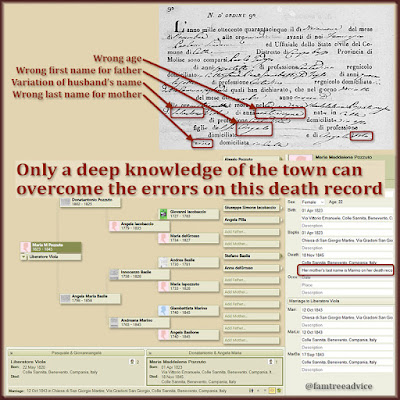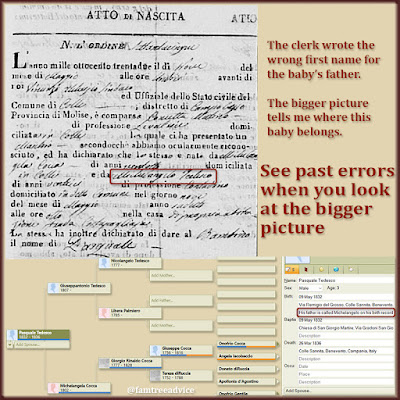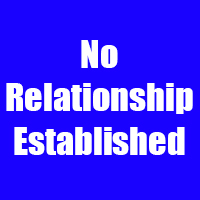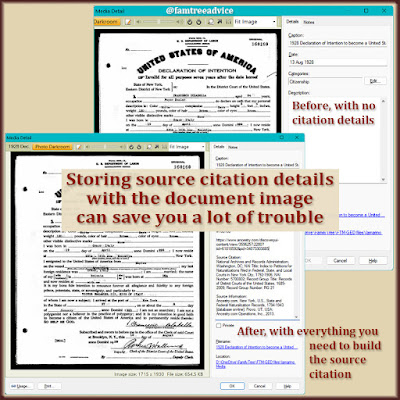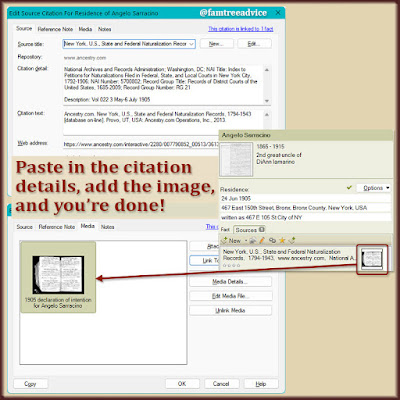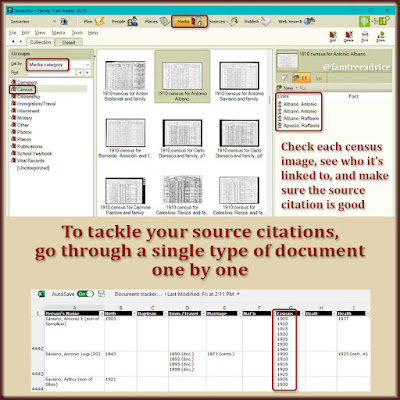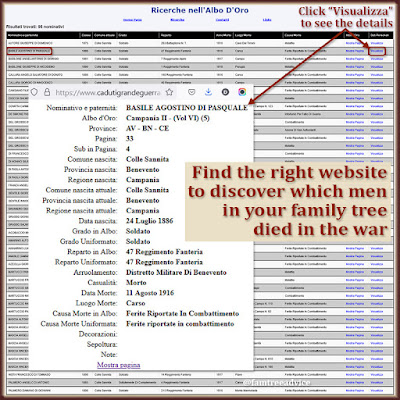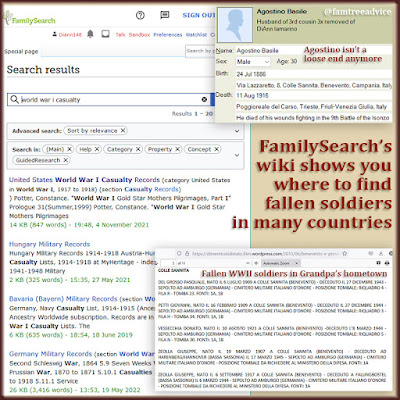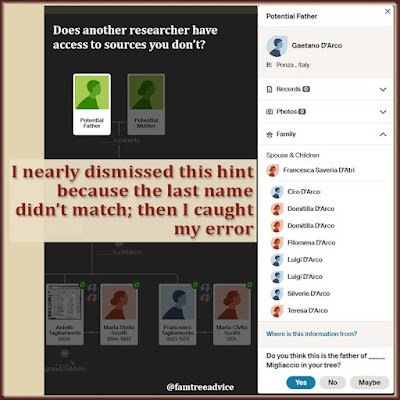I'm obsessed with my massive genealogy project. Connecting everyone from my ancestral hometowns is all I want to do! I've improved my process along the way, and today my tree has 50,000 people. (See my more efficient technique below.)
When I write about this project, some people say, "I wish I could do that, but the vital records aren't available." Others say they're now doing the same thing, and all the connections are astonishing.
 |
| How many people from one town are somehow related? It's not just an obsession. It's a legacy. |
Building an 18th–20th Century Foundation
When I add a person to my tree from the 1880s–1900s, I know they're someone's grandparents. That made me realize my project makes it easier to figure out my connection to distant DNA matches.
If you have a DNA match with a very small family tree, you may not see much more than their grandparents' names. I used to make an effort with these matches but not get very far.
Now I'm in a much better position to figure out my connection to a DNA match's grandparents. This weekend I scrolled through my match list, looking for those I hadn't figured out.
 |
| Simple notes make it easy to navigate your DNA match list. |
One after another, I found their recent ancestors in my tree, and I saw our connection. I add notes to my matches that appear on the main DNA match list on Ancestry. I can scroll down the list and see who needs more research. This weekend I added new notes, like this:
- his 1G Maddalena Iamarino is my 3C3R, common ancestors are my double 5Gs Giovanni Iamarino and Libera Pilla
- 5C thru shared 4Gs Giuseppantonio Basile and Maria Maddalena Tedesco
- 3C descendant of Antonio Pilla and Angelina Iarossi, common ancestors are my 2Gs Gennaro Pilla and Maria Giuseppa Liguori
- her 1G Gennaro Finella is my 3C3R, common ancestors are my 5Gs Giuseppe d'Emilia and Orsola Mascia
Some matches helped me see which of my distant cousins came to America and who they married.
My all-consuming genealogy project is bearing useful fruit!
Letting the Documents Lead the Way
Here's an overview of my process and how I made it work even better.
I started with my Grandpa Iamarino's hometown of Colle Sannita. Vital records for the town are available online on the Antenati website (see "How to Use the Online Italian Genealogy Archives"). They have:
- Birth, marriage, and death records from 1809–1860 except for 1859 deaths and marriages
- Birth records from 1861–1904 except for 1875
- Birth records from 1910–1915 except for 1911
- Death and marriage records from 1931–1942 except for 1939 deaths
That's a total of 225 types of records and more than 38,000 document images.
My first step after downloading all the files was to:
- view each document and
- rename the jpg file with the name(s) of the subject(s).
An image named 007853875_00496.jpg now contains the names of a baby and its father:
007853875_00496 Carmine Pasquale d'Agostino di Giuseppe.jpg
The father's name ("di" means of in Italian) lets me search for all the children of any man, like Giuseppe d'Agostino. I can use a free program called Everything to search my computer for "d'Agostino di Giuseppe. (See "My Secret Weapon for Finding Relatives".)
 |
| This file-renaming process is the basis for building an entire town's family tree. |
The file renaming process alone was quite a task! I renamed more than 38,000 image files for this town (and tons more for my other towns). Then I was ready for the BIG project.
I created a spreadsheet with the name of each file. I go line-by-line, viewing each document again, and trying to fit the person or people into my family tree. If they fit, I mark it in my spreadsheet. And if they don't fit, I mark that, too.
I went through several years' worth of documents this way. One problem came up again and again. Some townspeople went by their middle name, making them hard to find each time they had another baby. So I made a change to the process.
If I'm adding an 1865 baby to a couple, I'll mark it on the spreadsheet. But before moving to the next line, I'll search for every other baby belonging to this couple. And if their kids' birth records have a marriage notation, I'll search for their spouses. And I'll add any of their kids. Then I'll return to the next line in my spreadsheet.
This way, couples using unexpected first names won't stump me each time they have another baby. It saves so much time when I complete their families all in one go.
Another problem I overcame was searching for a set of parents only to discover their baby is already in my tree. That was a wasted search. Here's how I fixed that problem. Before I begin another year's documents, I sort my Family Tree Maker index by birth, marriage, or death year. Then I compare the spreadsheet to the index and mark off the people I already have.
Because I complete entire families at one time, each new year I review is already 75% complete.
At this moment I'm up to the 1868 births. I have 64 folders left to go out of the 225 available. When I add 20th-century people to my family tree, it gets easier to connect with more DNA matches.
When I do get to the bottom of the spreadsheet, I'll make one more pass. I'll re-review the people I couldn't fit into my family tree. They tend to fall into 5 categories, and I want to mark them as such:
- "Out-of-towners" who happened to have a baby or die in Grandpa's town.
- "Old people" who died too early for me to know who their children were, or to have their parents in my tree.
- "Too-common names"—This is usually the only child of a couple I can't ID because so many townspeople had the same names.
- "Foundlings" who died without marrying.
- "Possibilities"—These are people I may be able to fit into my tree after I've gone through all the documents.
About 95% of the people found in those 38,000+ document images have a connection to me. Towns in this area kept largely to themselves because travel between them was hard. And all my roots are in this area. I'll bet I can reach the same 95% connection rate with documents from my other ancestral hometowns.
Well, my retirement is fully booked. I'm in my happy place every single day. Where are you?



